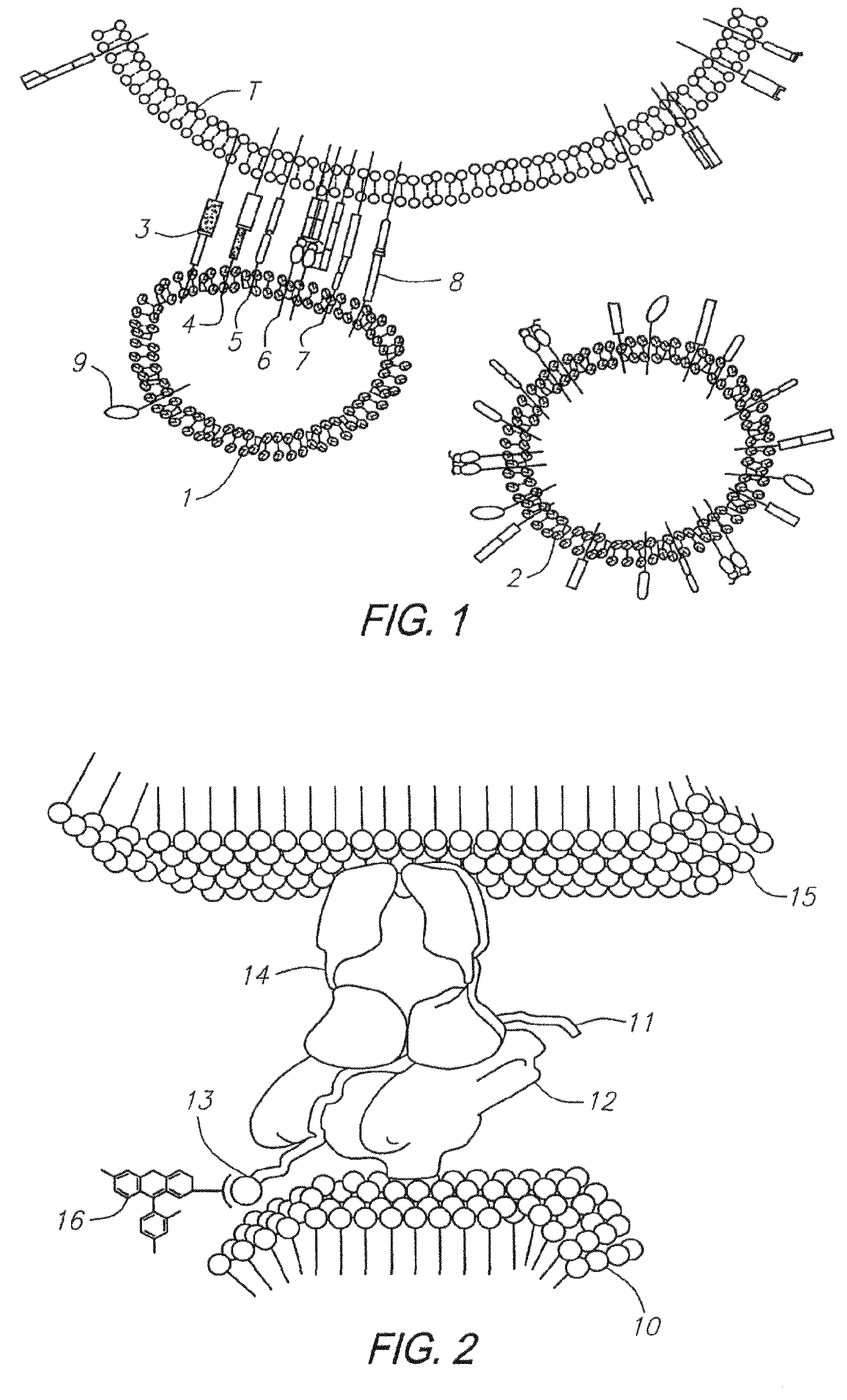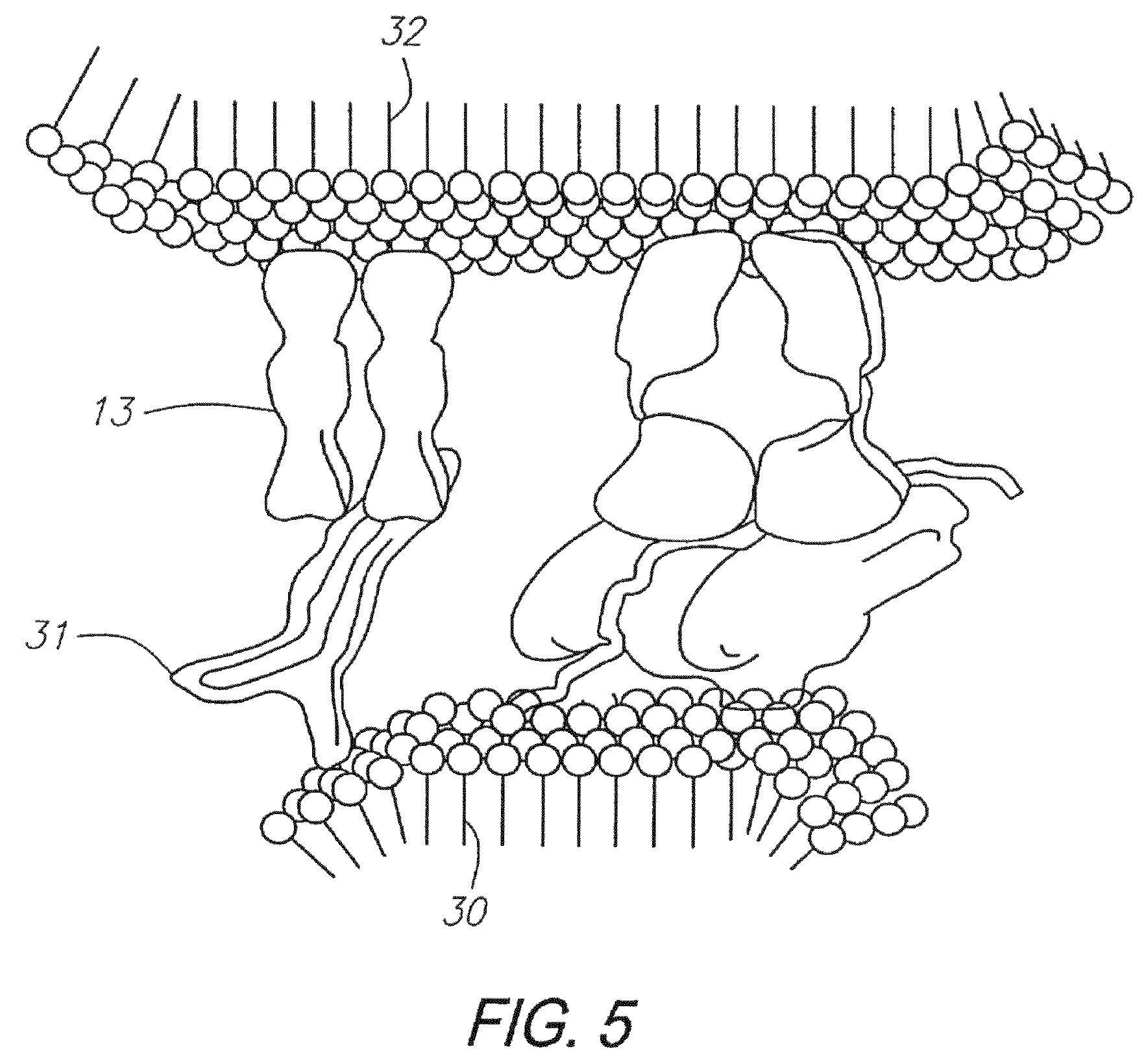Method of isolating antigen-specific T cells employing artificial antigen presenting cells
a technology of presenting cells and presenting cells, which is applied in the field of immunology, can solve the problems of affecting the understanding of intervention, unable to detect by extracellular antibodies, and unable to achieve the detection of antibodies, and achieves the effect of affecting the immune system of the recipien
- Summary
- Abstract
- Description
- Claims
- Application Information
AI Technical Summary
Benefits of technology
Problems solved by technology
Method used
Image
Examples
example 1
Liposome Assay for Detection of Antigen-Specific T Cells
[0296]In this example, experiments are described which demonstrate the capacity of T cells to bind to liposomes containing cholesterol having MHC:antigen complexes inserted into the liposome membrane. The capacity of T cell binding was quantified by flow cytometry analysis (FACS). Negative controls for the binding include the use of a control T cell line (i.e., non-reactive) having specificity for an irrelevant peptide, incorrect MHC restriction, peptide and antibody inhibitions, limiting dilutions, and the use of MHC without peptide.
[0297]The ability of the method to provide for discrimination between antigen-specific T cells was facilitated by use of two T cell hybridomas specific for the same peptide. These hybridomas were OVA323-336 (which correspond to residues 323-326 of ovalbumin) (obtained from Research Genetics, Huntsville Ala.) which were restricted by two different MHCs, I-As and I-Ad. Specifically, the designations ...
example 2
Identification of Antigen Specific T Cells in Mouse Embryonic Thymuses
[0309]In this example, a murine model is used to investigate the effects of a naturally processed self-peptide on the maintenance and proliferation of T cells which may cross-react with homologous peptides of exogenous origin, all performed in a non-transgenic system. The example emphasizes the fact that without a method such as that of the current invention to capture T cells, it is not possible to evaluate polyclonal antigen specific chimeric T cell selection in a non-transgenic system. This is because conventional methods that examine cytokine presence or cell proliferation cannot identify cells specific for relevant antigen.
[0310]The self-peptide Iα52 (ASFEAQGALANIAVDKA) (Seq. Id. No. 1), used in these experiments corresponds to residues 52 to 68 of the a chain of the I-E molecule. It represents one of the most abundant peptides naturally processed and presented in the context of 1-Ad (Hunt, et al. (1992), Sci...
example 3
Identification of Cross Reactive T Cells with Specificity for Homologous Peptides
[0324]The method of the invention was used to further examine the capacity for closely related antigenic moieties to cross-react, in this case using the murine model seen in Examples 1 and 2. Evidence of such cross-reaction provides the basis for an explanation of some autoimmune disease states. In this Example, the ability of T cells selected by the self-MHC-derived peptide Iα52 to cross-react with the homologous peptide of non-self origin Hi15, was examined by performing antigen-specific T cell analysis.
Materials and Methods
[0325]Antigens
[0326]The Iα52 derived peptide Iα52 was synthesized as described in Example 2. Hi15 (TSFPMRGDLAKREPDK) (Seq. Id. No. 3) was synthesized by standard solid phase peptide synthesis technique (Research Genetics). Hi15 was identified among 20 candidates with an arbitrary homology score of 20, based on homologies including potential MHC-binding residues. The search was perf...
PUM
| Property | Measurement | Unit |
|---|---|---|
| molecular weight | aaaaa | aaaaa |
| molecular weight | aaaaa | aaaaa |
| diameter | aaaaa | aaaaa |
Abstract
Description
Claims
Application Information
 Login to View More
Login to View More - R&D
- Intellectual Property
- Life Sciences
- Materials
- Tech Scout
- Unparalleled Data Quality
- Higher Quality Content
- 60% Fewer Hallucinations
Browse by: Latest US Patents, China's latest patents, Technical Efficacy Thesaurus, Application Domain, Technology Topic, Popular Technical Reports.
© 2025 PatSnap. All rights reserved.Legal|Privacy policy|Modern Slavery Act Transparency Statement|Sitemap|About US| Contact US: help@patsnap.com



